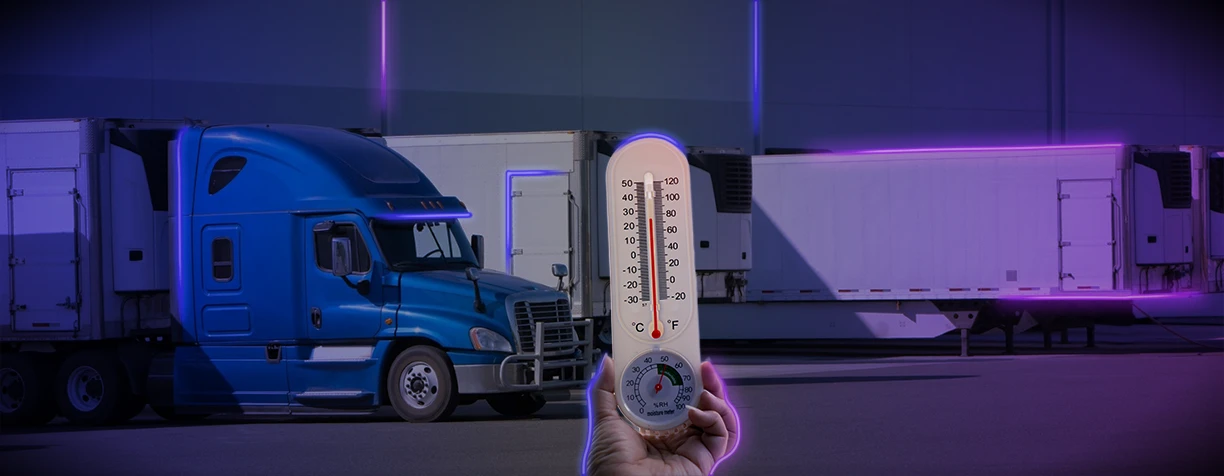The efficient handling of temperature-sensitive goods is crucial in today’s global supply chain. Cross-Docking for Temperature-Sensitive Goods offers a streamlined solution, minimizing the time products spend in storage and reducing the risk of spoilage or degradation. This method is gaining significant traction, particularly within the pharmaceutical, food, and beverage industries.
Table of Contents
What Is Cross-Docking?

Cross-docking is a logistics strategy where goods are unloaded from an incoming transport vehicle (like a truck or airplane) and loaded directly onto an outbound vehicle with minimal or no warehousing in between. The process is designed to bypass the traditional warehousing stage. This process saves time, labor, and reduces the risk of damage or spoilage.
Benefits of Cross-Docking
Cross-docking provides several advantages. It significantly reduces warehousing costs by minimizing storage time. It also accelerates the order fulfillment process and reduces the risk of damage or spoilage, especially important for temperature-sensitive items. The streamlining effect often leads to enhanced supply chain visibility and improved inventory management.
Cross-Docking Solutions for Temperature-Sensitive Goods
For Cross-Docking Solutions for Temperature-Sensitive Goods, the process needs specialized facilities and equipment. This includes temperature-controlled docks, refrigerated storage areas, and advanced tracking systems to maintain product integrity. The effectiveness of cross-docking heavily relies on accurate real-time data and integrated systems.
Cross-Docking Services for Temperature-Sensitive Goods
Specialized Cross-Docking Services for Temperature-Sensitive Goods are offered by many third-party logistics (3PL) providers. They manage the entire process, from receiving and sorting to cross-docking and final delivery. These services are valuable for businesses of all sizes, allowing them to concentrate on their core activities while experts manage their supply chain.
Cross-Docking in Canada
Cross-Docking in Canada is becoming increasingly important due to its strategic location and strong trade relationships. The country’s vast geography and diverse climate require efficient logistics solutions, making Cross-docking for Temperature-Sensitive Goods a valuable option for businesses operating within or through the Canadian market.
Cross-Docking in Vancouver
Cross-Docking in Vancouver offers access to key ports and transportation networks, facilitating efficient movement of goods. The city’s strategic location makes it a hub for international trade, offering a gateway to markets in Asia and beyond. The infrastructure supports rapid transit and distribution, which is particularly valuable for Cross-docking for Temperature-Sensitive Goods, allowing for the swift and safe transportation of perishable products.
Cross-Docking in Toronto
Cross-Docking in Toronto benefits from its position as a major commercial hub, facilitating trade with both the United States and other parts of Canada. Its extensive transportation infrastructure and a large consumer base contribute to its appeal. It is a crucial point for moving goods throughout North America, particularly for Cross-docking for Temperature-Sensitive Goods, ensuring the timely delivery of temperature-controlled products.
Cross-Docking in Montreal
Cross-Docking in Montreal provides access to major ports and railways, making it a key location for distribution within Canada and internationally. The city’s bilingual environment and international trade connections make it a strong player in the logistics sector. It’s an important gateway to North America and Europe.
Fastest Shipping in Canada

Achieving the fastest shipping in Canada is a significant advantage. Cross-docking for Temperature-Sensitive Goods contributes directly to this by minimizing transit times and allowing products to reach their destinations more quickly. This is particularly important for perishable items. Partnering with a reliable Canada 3PL provider can further streamline the process. Speedy delivery enhances customer satisfaction and reduces costs.
Case Study: Pharmaceutical Distribution
A major pharmaceutical company, let’s call them “PharmaCorp,” utilized Cross-Docking for Temperature-Sensitive Goods to streamline its distribution network. They were facing challenges in the distribution of vaccines, which need to be stored in a precise temperature range.
Challenge: Frequent delays and temperature excursions during storage and transit, leading to product degradation and loss of revenue.
Solution: PharmaCorp implemented a cross-docking system with a 3PL provider specializing in temperature-controlled logistics. They invested in refrigerated docks, real-time temperature monitoring, and sophisticated tracking systems.
Results:
- Reduced Transit Time: Decreased average transit time by 40%.
- Minimized Temperature Excursions: Observed a 95% reduction in temperature-related product damage.
- Cost Savings: Realized a 15% decrease in overall supply chain costs, primarily through reduced warehousing and spoilage expenses.
Here’s a simple table summarizing the before and after results:
| Metric | Before Cross-Docking | After Cross-Docking | Improvement |
| Average Transit Time | 72 hours | 43.2 hours | 40% reduction |
| Temperature Excursions | 20% | 1% | 95% reduction |
| Supply Chain Costs | Baseline | 15% decrease | 15% cost savings |
Implementing Cross-Docking for Temperature-Sensitive Goods
To successfully implement Cross-Docking for Temperature-Sensitive Goods, careful planning and execution are essential. This starts with assessing your current supply chain, identifying the key products suitable for cross-docking, and selecting a reliable logistics partner. The process includes:
- Assessment: Evaluate current processes and identify bottlenecks.
- Partner Selection: Choose a 3PL with expertise in temperature-controlled logistics.
- Technology Integration: Implement real-time tracking and monitoring systems.
- Process Optimization: Streamline receiving, sorting, and dispatch procedures.
Real-World Examples of Cross-Docking
- Grocery Retail: Supermarkets use cross-docking to deliver fresh produce and dairy products efficiently.
- Pharmaceuticals: Cross-docking is vital for vaccines, medicines, and other temperature-sensitive drugs.
- E-commerce: Fast-moving consumer goods (FMCG) benefit from cross-docking for swift fulfillment.
- Automotive: Parts and components are often cross-docked to meet just-in-time manufacturing needs.
- Food and Beverage: Perishable items, such as seafood, are perfect candidates for this strategy.
Advantages of Cross-Docking
- Reduced Handling
- Faster Delivery Times
- Lower Inventory Costs
- Improved Product Freshness
- Reduced Risk of Spoilage
- Improved Customer Satisfaction
- Enhanced Visibility and Control
Companies That Provide Fulfillment Services

Here are five real companies that provide fulfillment services, often including cross-docking:
- C.H. Robinson
- XPO Logistics
- DHL Supply Chain
- FedEx Supply Chain
- DelGate
Conclusion
Cross-Docking for Temperature-Sensitive Goods presents a robust and cost-effective strategy to manage and distribute temperature-sensitive products. By optimizing the flow of goods and minimizing storage time, businesses can dramatically reduce costs, improve efficiency, and maintain the integrity of their products. This approach is especially critical in the age of e-commerce and the increasing demands of modern consumers. The strategic application of Cross-Docking for Temperature-Sensitive Goods empowers companies to optimize their supply chains.





